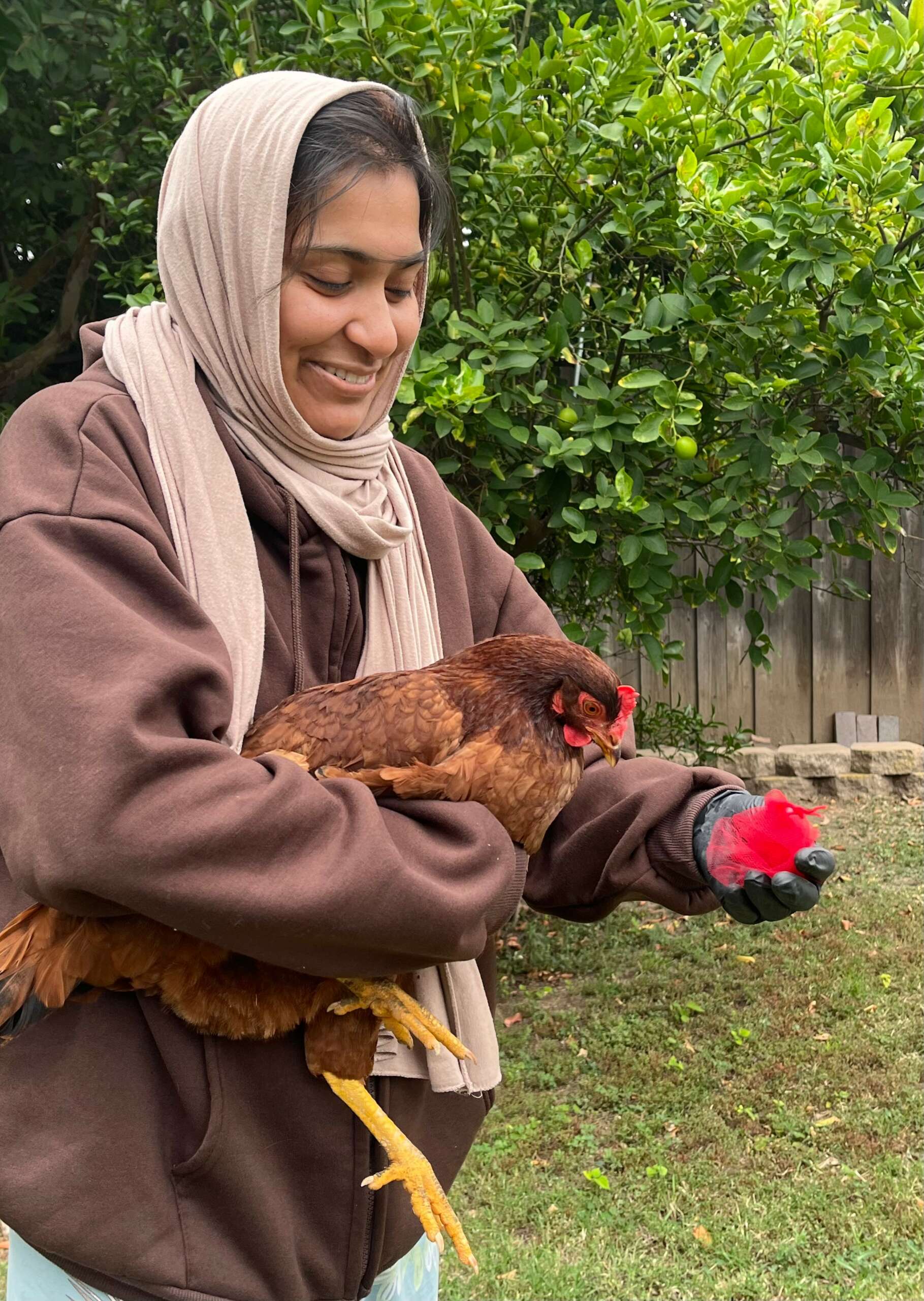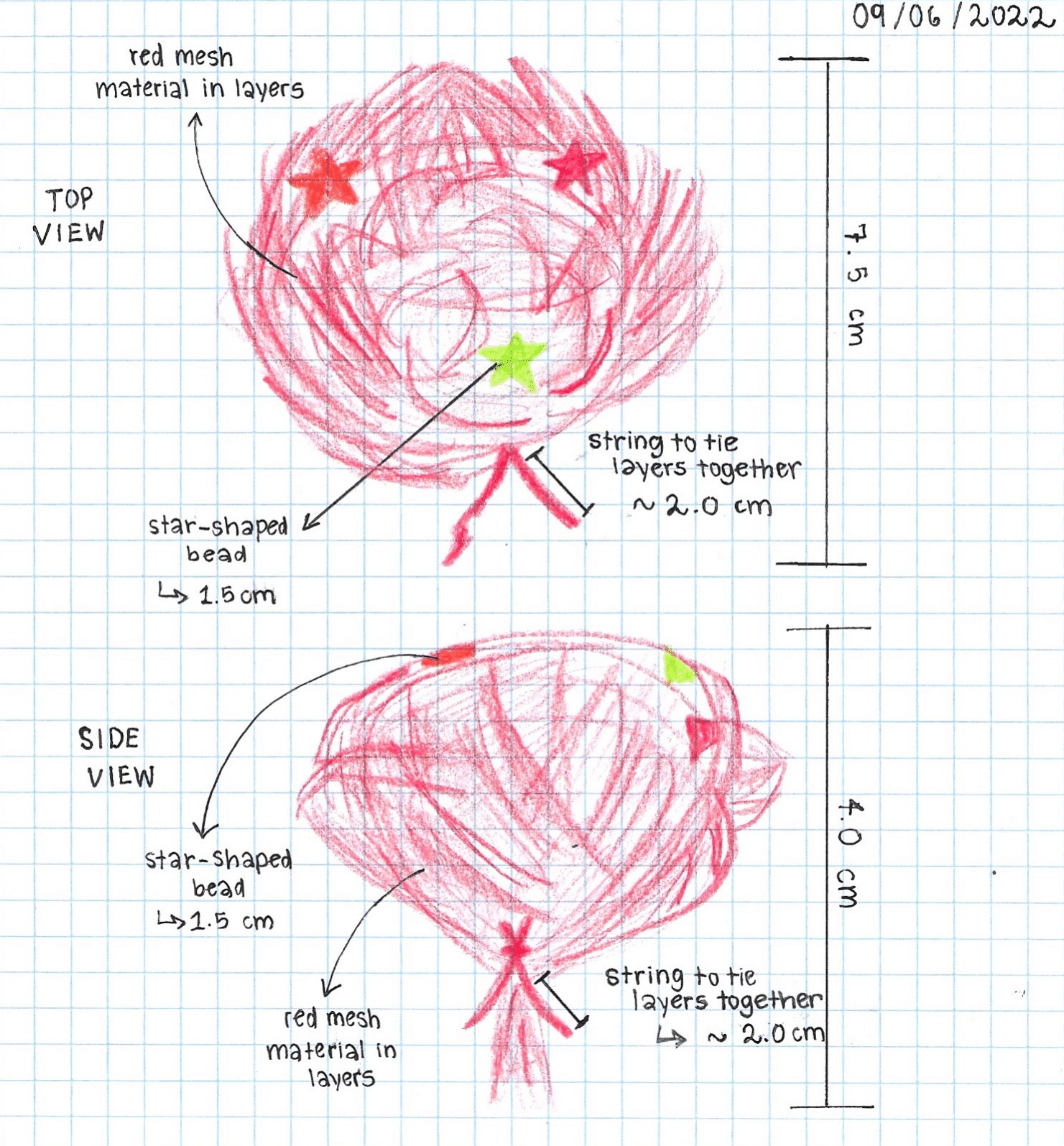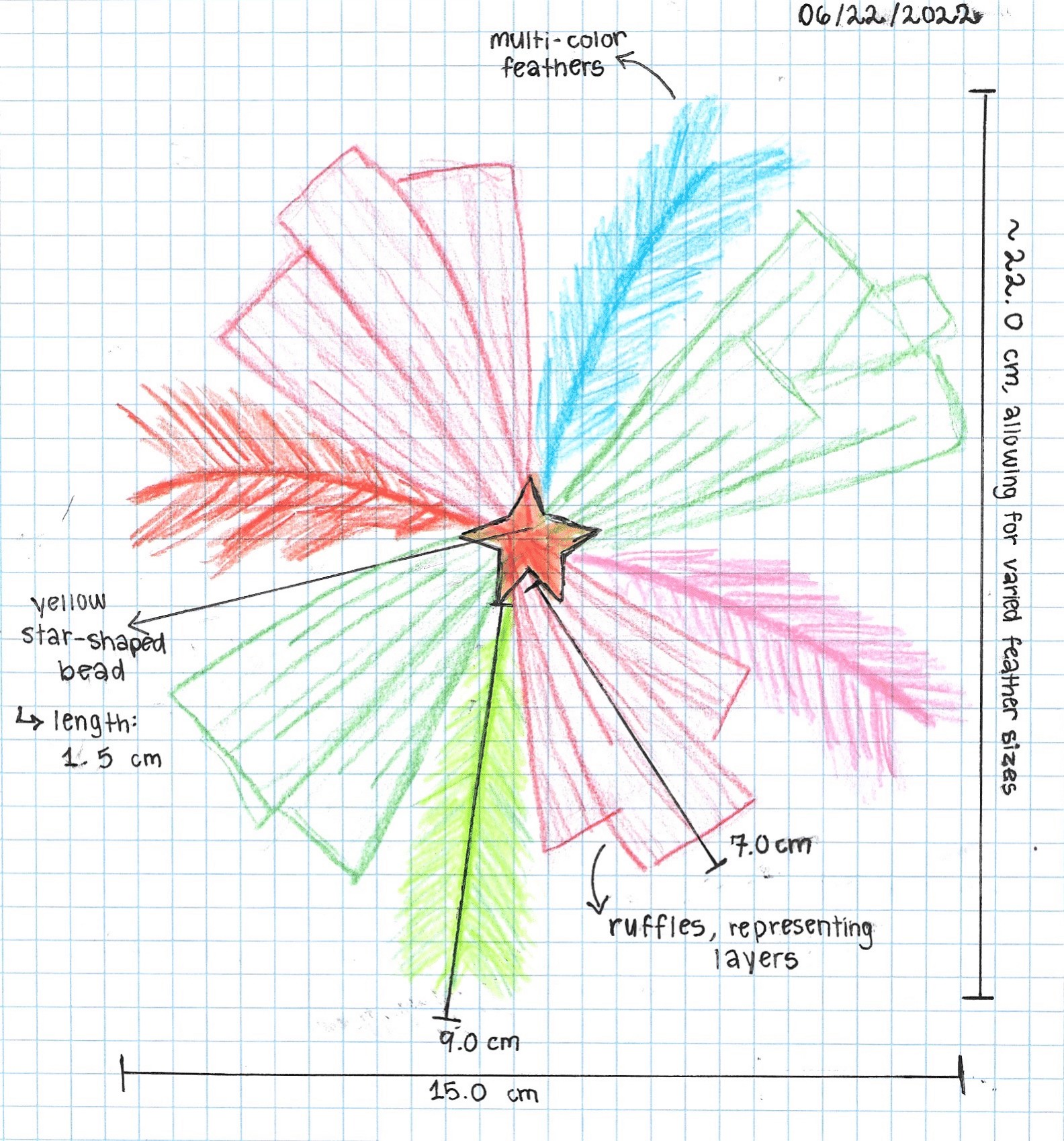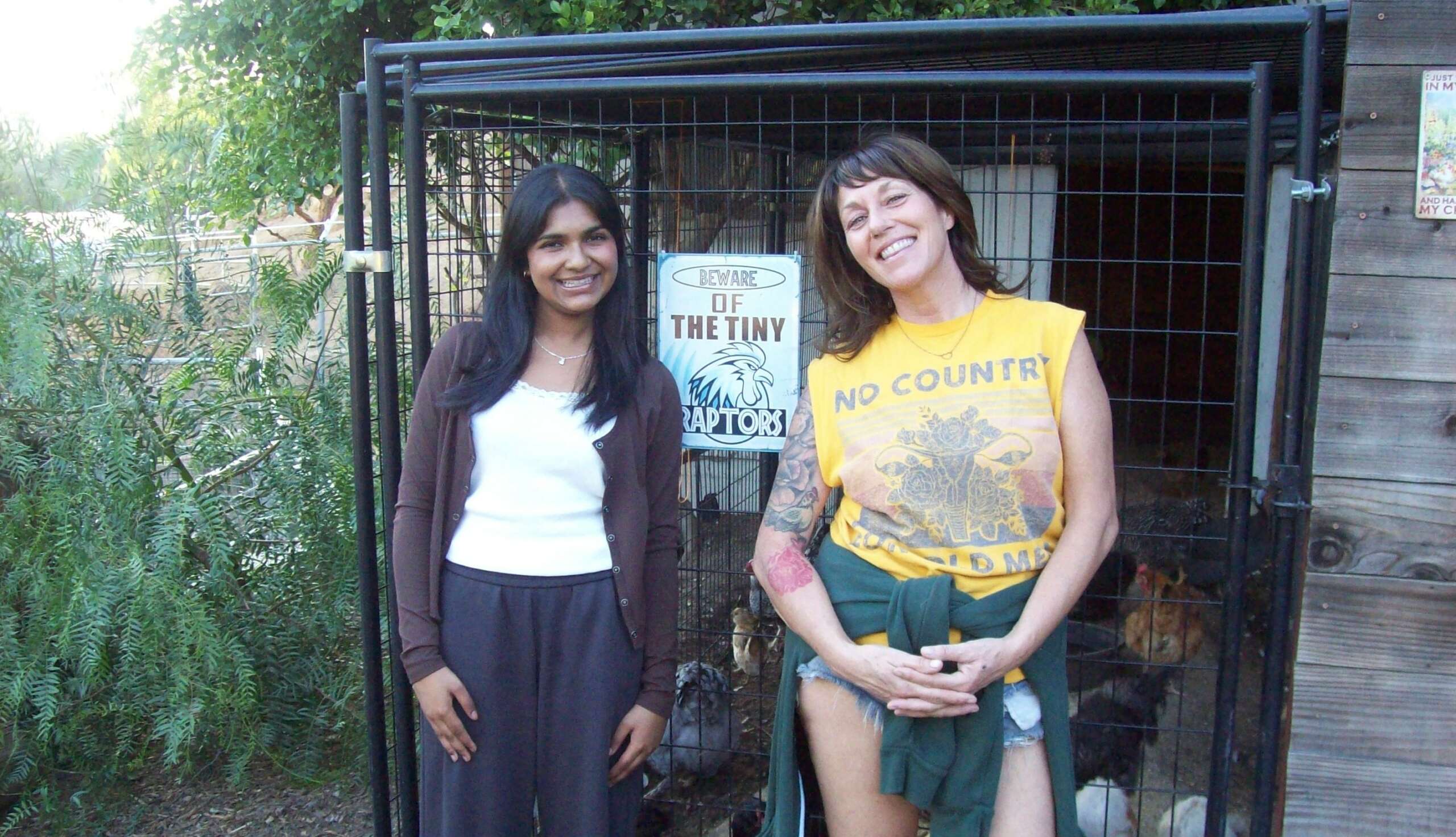We recently connected with Anika Nawar and have shared our conversation below.
Alright, Anika thanks for taking the time to share your stories and insights with us today. Can you talk to us about a project that’s meant a lot to you?
The Free Feathers Foundation is the result of combining my love for crafts and my interest in avian welfare.
As a high schooler, I spent my free time in my neighbor’s backyard, sanitizing his forty-something pet chickens’ cages and refilling their feeders. Mr. Ramone is a low-income gardener, so he does not have much time to coddle them or enough money to buy luxurious coops; they live in two-by-three cages. But I became increasingly concerned as they stopped socializing and grooming themselves – worse, their eggs were noneggsistent. Having seen these symptoms in my own pet chicken before she passed away, I understood they were depressed due to restricted eggsercise.
After foraging high academia archives, I hypothesized the dual-solution to poultry depression and stagnant egg production: dopamine stimulation! Dogs, mice, even cows had toys, but no one sold chicken toys. So I designed them with chickens’ commonly preferred colors and teggstures. Turquoise ceramic beads hung from looped red tulle, fried mealworms hid within layers of fabric, inviting a searching game – ChickFlicks!
To confirm the handmade toys’ effectiveness in resuming egg production, I drafted a research paper with the help of my school’s AP Course instructors. For eggsperimentation, I organized Love Always Sanctuary’s (my farm internship location) and Mr. Ramone’s classified-depressed hens into control/eggsperimental groups, noted initial/final behavior, and recorded pre-toy/post-toy egg counts. Statistical examinations revealed that play-enriched chickens upticked by three eggs per week!
Five months of solo toy-making joined weeks of website development, research finalization, and promotional PackLife LA workshops. Partnering with farms and college students across California and UChicago, I recruited staff to distribute over seven hundred free ChickFlicks to seventy underfunded chicken-owning ranches and taught them eggsactly why their feathered friends needed toys.
Now, my organization, recognized as the “Top Veterinary Organization” by PackLife LA, caters to ten U.S. states, small towns in Germany, and agrarian homes in Bangladesh. My final research paper was recently accepted by a regional Scientific Review Committee and has been sent to the Harvard Journal of Emerging Investigators for publication. These are just my first few steps, as I have plans for expanding my avian empire to industrial farms and wider audiences!


As always, we appreciate you sharing your insights and we’ve got a few more questions for you, but before we get to all of that can you take a minute to introduce yourself and give our readers some of your back background and context?
Growing up, my parents always taught me to guide the blind and become the caretaker. With my mom directing victims of domestic violence, dad rehoming evicted residents, and sister administering DTLA’s homeless shelters, that left one niche spot for me: looking after the non-humans.
I’ve always been surrounded by animals. When I say surrounded, I mean they were literally within a five-foot-radius at all times: rescued pigeons dosing off on my lap, raccoons curling up in my garden, opossums sniffing out the meals I left for them. These common animals may be considered pests in our neighborhoods, but I find merit in anything that breathes, so I readily take them in for rehabilitation or coddling. My affection for them extends beyond rescues, as I try using all my connections to improve animal resources and welfare.
Of course, I have the Free Feathers Foundation, but my efforts are not reserved for chickens only! As a Care Assistant at West Valley Animal Shelter, I help educate potential clients about the basics of taking care of their pets before adoption. As returning Team Captain of my School’s Envirothon team, I ensure that our regional climate action proposals meet the needs of wildlife. And as the annual intern at Love Always Sanctuary, I initiate sanctuary partnerships to provide mutual resource connections within the animal-rescuing community.
Being a Creative is not just about the art of innovation, but also the ability to take into account the community’s concern, what I can offer to fix it, and how I can help maintain those proposals for continued relief of target audiences.


We’d love to hear a story of resilience from your journey.
Believe it or not, the startup was the easy part. Website creation, preparing presentations for workshops, sitting alone for hours on end and crafting the toys, reaching out to create partnerships and staff teams – those were all fun. It was the cooperation with the chickens that got me stressed.
I was quite proud of my first ChickFlick prototype; the toy was beautiful, following a star shape and alternating ribbons of tulle and synthetic feathers. I wanted to first observe how the research hens would react to its presence, but when I introduced it to my experimental groups, they looked as if it might swallow them whole, absolutely refusing to go near it. I thought maybe they would approach it after a few days of its presence, but their behavior persisted for two more weeks, until I finally gave up.
Further research implied that Prototype #1 was too large, so I made my second prototype smaller: a simple ball of tulle with ceramic stars lining the leaflets. However, after re-introduction to the research chickens, they easily flattened it with their excessive pecks and scratches.
So onto Prototype #3, a medium-sized, bow-shaped version that includes satin ribbon, ceramic stars, synthetic feathers, and bright tulle, all of which the chickens liked. The third reintroduction period was stressful, as I thought they’d reject the toy again, but within two days, they had taken a liking to it, and the airy shape of it resisted their attempts to flatten it! The chickens played more with this prototype than any other version, so this was the final product and the research was conducted with this toy.
Chickens’ behavior ranges from excessive fear to almost-evil mischief, I just had to work around it.


What’s the most rewarding aspect of being a creative in your experience?
Although the research and creation process is the most enjoyable, I’d say the actual distribution period is the most rewarding. All those sleepless days of tweaking prototypes, contacting stakeholders for negotiations, and revisiting research limitations comes down to the final image of a ranch owner squealing with joy as their chicken plays with a ChickFlick for the first time.
When I was younger, all my crafts were made to cater to my family’s needs: dollhouses made out of shoeboxes for my sister, duct-tape wallets for my dad, and popsicle-stick hair clips for my mom. But as my creativity grows, so does my audience. Each invention is a stepping stone: donation programs for local animal shelters, improved curricula for nearby elementary schools, climate change action plans for agricultural counties, and now, interactive medication for chickens at a national level.
I remember when I first introduced the final ChickFlick prototype to Mr. Ramone, he seemed a little incredulous at the idea of this heap of tulle curing poultry depression. But all I had to do was hang it up in the first cage to persuade him; it’s rewarding to know that people can see merit in simple arts and crafts. It is this full circle of planning, making, implementing, and observing that really pushes me to share my creativity with my community.

Contact Info:
- Website: https://www.freefeathersfoundation.com/
- Instagram: https://www.instagram.com/freefeathersfoundation/
- Other: email: [email protected]
Image Credits
Anika Nawar, Nishat Salsabil, Ramos Ramone


